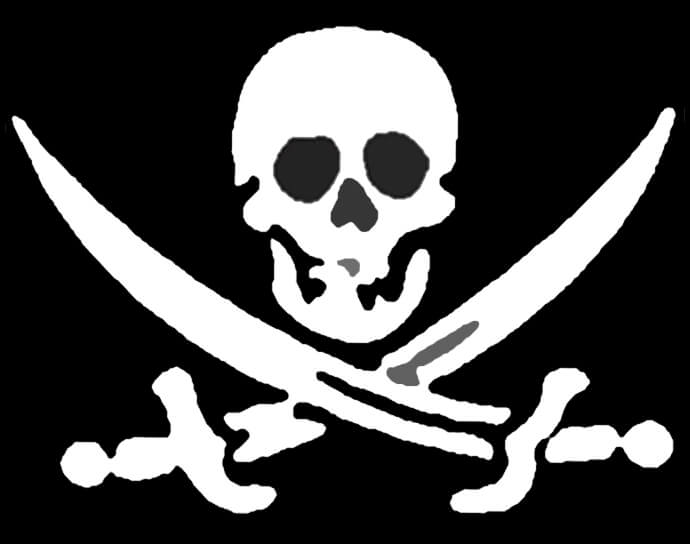Bonus Blog 1: Snatch That (Pirate) Booty
Ciao everyone! Welcome back. Here is this week’s joke:
How much did it cost for a pirate to get his ears pierced?
A buccaneer!
I would rate this joke a 9.25/10 because I think it’s clever. I know it made me laugh and I hope you guys enjoyed it too.
This wouldn’t be a blog by me if I didn’t include a pure history post for you all. We tend to see pirates all over the place, from blockbuster movie franchises to Halloween costumes to history textbooks; so what are some of the basics we know about these swashbucklers? Arrrrrrre you ready kids? The only acceptable response would be “aye aye, captain!”
The classical definition of a pirate is someone who commits piracy, which would include robbing and plundering ships. I think I’d also characterize them as extremely stylish with excellent hats, high boots, and nice golden jewelry.

As early as the Vikings, Phoenicians, and the Roman Empire, sailors have been marauding ships for ages. I’d like to focus on the prime of piracy, which was between the sixteenth and eighteenth century, most notably called the Golden Age of Piracy.
Like most things, piracy across the western hemisphere can be attributed to the Age of Exploration and colonialism in North, South, and Latin America.
After Christopher Columbus’ travels to the West Indies, several Spanish ships frequented this voyage over the Atlantic and the Caribbean, transporting goods back and forth among the colonies and Europe. Silver, gold, and other precious stones and gems were carried back to the Spanish monarchs, or rather, were attempted to be brought back. The Royal Museums of Greenwich state that these large ships, called galleons, were massive targets for pirates.

Low and behold, when the lovely Jolly Roger or Black Pearl was spotted from the crow’s nest, thievery was about to commence. Pirates were pretty violent and even raided coastal towns with accessible docks when floating ships weren’t enough.
The buccaneers were the pirates that robbed galleons, since they lived on Hispaniola in the Caribbean and its tiny turtle-shaped neighbor, Tortuga, in the 17th century. Maybe you’ve heard of this from the Pirates of the Caribbean franchise, which is more accurate than you may think.

Most surprising is that “the governors of Caribbean islands paid the buccaneers to attack Spanish treasure ships. Although raids began in this way, with official backing, the buccaneers gradually became out of control, attacking any ship they thought carried valuable cargo, whether it belonged to an enemy country or not. The buccaneers had become true pirates” (Royal Museums of Greenwich).
Captain Jack Sparrow’s story and his encounters appear to be historically correct, since several scenes picture the local royalty paying thieves under their finely ornamented tables. While one of Johnny Depp’s iconic roles is simply fictitious, it was based off of real-life pirate John Ward, an Englishmen turned Muslim after settling down.
Other famous eye-patch-baring and gold-tooth-sporting pirates worth mentioning are Henry Morgan, William ‘Captain’ Kidd, ‘Calico’ Jack Rackham, Bartholomew Roberts and Blackbeard. While modern pirates may still survey unvigilant seas, I still think they’re pretty cool.
Now, it’s my turn to make like a tree and get out of here, or perhaps in this case, walk the plank. Until next time my jokers!
Reference: Royal Museums Greenwich. “The Golden Age of Piracy.” Royal Museums Greenwich,
Royal Museums Greenwich, https://www.rmg.co.uk/stories/topics/golden-age-piracy.
Fun fact: I actually never watched the Pirates of the Caribbean so that’s pretty crazy but I still find the history of pirates extremely interesting. I loved your blogs this semester and your jokes and I wish you the best for the summer!